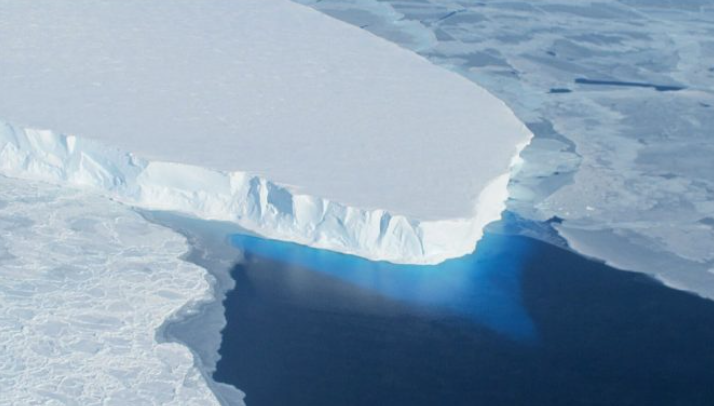Science Alert: ‘Doomsday Glacier’ Melting at a Terrifying Rate (GS Paper 3, Environment)

Context
- Scientists have been studying the Thwaites Glacier in Antarctica, which is often called the “Doomsday Glacier” because it melts so quickly and has very bad effects on sea levels around the world.
- Recent studies show that the rate of ice loss has sped up, much faster than was thought before.
- This is mostly because warming ocean currents are attacking the glacier from below.
Understanding the Acceleration
- The glacier’s ice shelf, which is its moving part on the water, has been breaking down at an amazing rate.
- Scientists have found that this kind of breaking down is a sign of deeper changes in the structure and stability of the glacier.
Implications for Global Sea Levels
- It’s possible for Thwaites Glacier’s ice to melt all the way to the surface, which would raise sea levels by about three meters (ten feet).
- The fall of this glacier could be very bad, causing coastal areas around the world to flood. This could happen within a few decades if the current melting trends continue.
Broader Impact on Antarctic Ice Sheet
- The melting of Thwaites Glacier is not happening by itself; it could make the whole Antarctic ice sheet even less stable.
- If one part becomes unstable, it could cause nearby ice bodies to melt faster, like a domino effect.
- This would make problems even worse than they already are because the sea level is rising.
More About Thwaites Glacier
- Thwaites Glacier, which is also called the “Doomsday Glacier,” is in West Antarctica and is about the size of Florida.
- It is currently causing about 4% of the rise in sea level around the world.
- The area below Thwaites Glacier slopes down and inland, which makes it easy for warm water to get in and speed up its melting.
- The glacier’s ice shelf holds back fast-moving ice, but it’s getting thinner.
- If Thwaites falls apart, the sea level could rise by over 65 centimetres. Icefin, an underwater robot, explored beneath Thwaites and found processes that are making it melt.
- The glacier’s grounding line is also moving backwards.
- This is where the ice changes from being grounded to floating.
- Thwaites’ actions are closely watched because they could have terrible effects on sea levels around the world.
More About sea-level rise
- Around 3.6 mm of sea level rise happens every year now, up from 1.4 mm per year in the 20th century.
- This is mostly due to climate change.
- These rises are caused by things like melting glaciers and ice masses and the thermal expansion of warming ocean waters.
- Especially concerning is the fact that areas like Miami and Bangkok are vulnerable to the sinking land, which makes the effects of rising sea levels worse in those areas.
- Furthermore, the melting Arctic has an impact on the trends of global circulation, which could cause problems with weather systems around the world.
- Specifically, if present warming trends continue, the water level around Antarctica could rise by as much as three meters by the year 2300.


